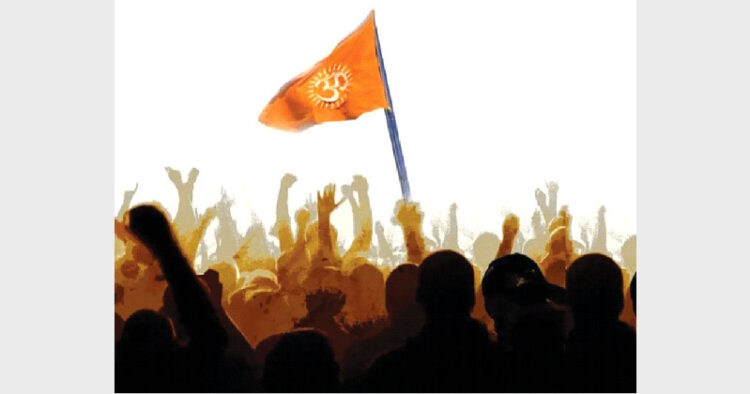These Hindus and Sikhs are Afghan citizens for generations and centuries. As their faith is different, it was tough for them to seek refuge in any border-sharing countries of this landlocked country. Finally, they found a safe home in their land of ancestors Pitrubhu and the holy land of their faith and cultural practices—Punyabhu. This is a classic example of Hindutva within and beyond the borders of India.
The deep roots of this timeless civilisation took care of its branches, widely spread beyond its borders. It has always been a policy of the Government of India to protect the Indian diaspora. Ministry of External Affairs of India estimates about 13-Million Non-Resident Indians (NRIs) and about 186-Million People of Indian Origin (PIO). Carnegie Endowment’s report, titled, INDIA’S EXPATRIATE EVACUATION OPERATIONS—Bringing the Diaspora Home, 2016, mentions that India has conducted more than thirty evacuation operations across Africa, Asia, and Europe, including its largest-ever civilian airlift of 110,000 people from the Persian Gulf in 1990.
Hindu, Hinduism, and Hindutva
The word Hinduism is used to suit the western lens of dogma-based prophetic religious practices. But it fails to convey the profound and unique historical and philosophical understanding that it represents in practice. There is no similar word to the Sanskrit word “Dharma” in English or other Western languages.
Mahatma Gandhi once clarified, “Hinduism is not a codified religion.” The great freedom fighter Veer Savarkar popularised the word Hindutva and described it as “Hindutva is not a word but a history. Not only the spiritual or religious history of our people as at times it is mistaken to be by being confounded with the other cognate term Hinduism, but a history in full. Hinduism is only a derivative, a fraction, a part of Hindutva.”—From the Essentials of Hindutva, by V.D. Savarkar, 1922
In “Indian Muslims—The Need For A Positive Outlook” by Maulana Wahiduddin Khan (1994), it is said: “The strategy worked out to solve the minorities problem was, although differently worded, that of Hindutva or Indianisation. This strategy, briefly stated, aims at developing a uniform culture by obliterating the differences between all of the cultures coexisting in the country. This was felt to be the way to communal harmony and national unity. It was thought that this would put an end once and for all to the minorities problem.”
While citing the above-quoted statement, the Supreme Court of India, in 1995, noted earlier court decisions from 1994 that observed “Hindutva” and “Indiansation” are Synonyms. And based on this and several other observations, Supreme Court of India said in its judgment, Hinduism or Hindutva is a way of life.
For centuries, people from the subcontinent were identified globally as Hindus. But compelling examples come from the iconoclastic Communist ideology… In 1953, Communist dictator Stalin called the Indian language “Hindu” while talking to the then Indian Ambassador.
Started as an open-minded newspaper over 140 years ago, The Hindu, despite later shifting the gears toward Communist thinking and having editor-in-chief close to the Communist Party of India, never changed the newspaper name. When it came to losing an identity, even the radical Indian left-woke culture never demanded to cancel The Hindu name.
Hue and cry against Hindus and Hindutva
Historically, anti-human rights Communist ideology thrived in India on social division, opposing the free economy and fostering violence. Those who never thought to change their newspaper name/identity keep giving sermons to Indians about not associating with nationality and culture. But as democracy matured and the economy liberalised, Indian Communism coated as Leftism (far different from the American left) lost its steam and public support both politically and socially. So, opposing Hindutva and Hindus became an act of desperation with the hope of gaining attention to survive.
Such disparaging activism has been desperately tried again and again—sometimes by collecting and publicising 100s of intellectuals’ signatures for one protest; 100s more later by celebrities for some other protest; and now—by falsely declaring some American Universities as sponsors of some anti-Hindutva conference that doesn’t even have as of now, any conference organiser.
Ironically, the Communist thoughts that love to hate America and the freedom it represents are desperately trying to seek their support to validate their acts. This will only help such groups gain momentary publicity that will be followed by ongoing self-dismantling of their ideology, Communism.
If such activists really want to be part of the socio-political success story of India, they should read about Hindutva from Savarkar to the Supreme Court of India’s judgment and adopt the deeply rooted Hindu civilisation, culture, and ethos that they, like it or not, are part of. Understand it well and stay away from following “copy-pasted” and “recycled” biased political interpretations. It is challenging to change such old habits. Till then, the outcome will be, as the old saying goes, “Insanity is doing the same thing over and over again but expecting different results.”














Comments